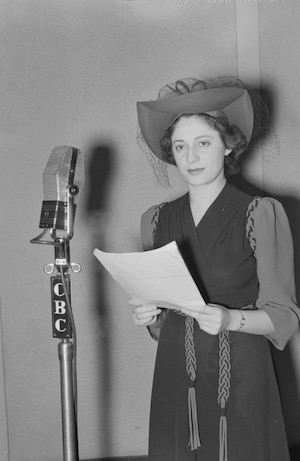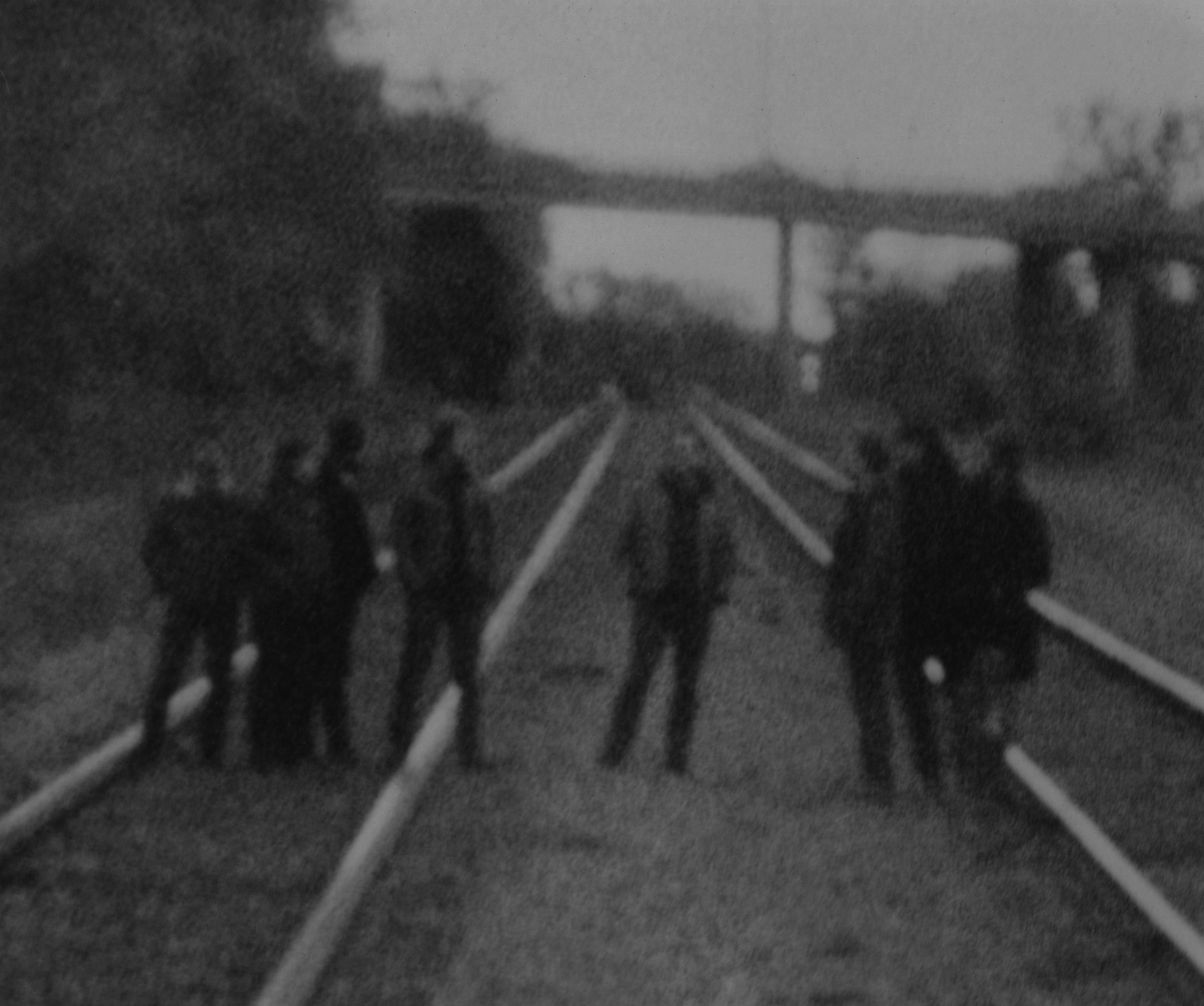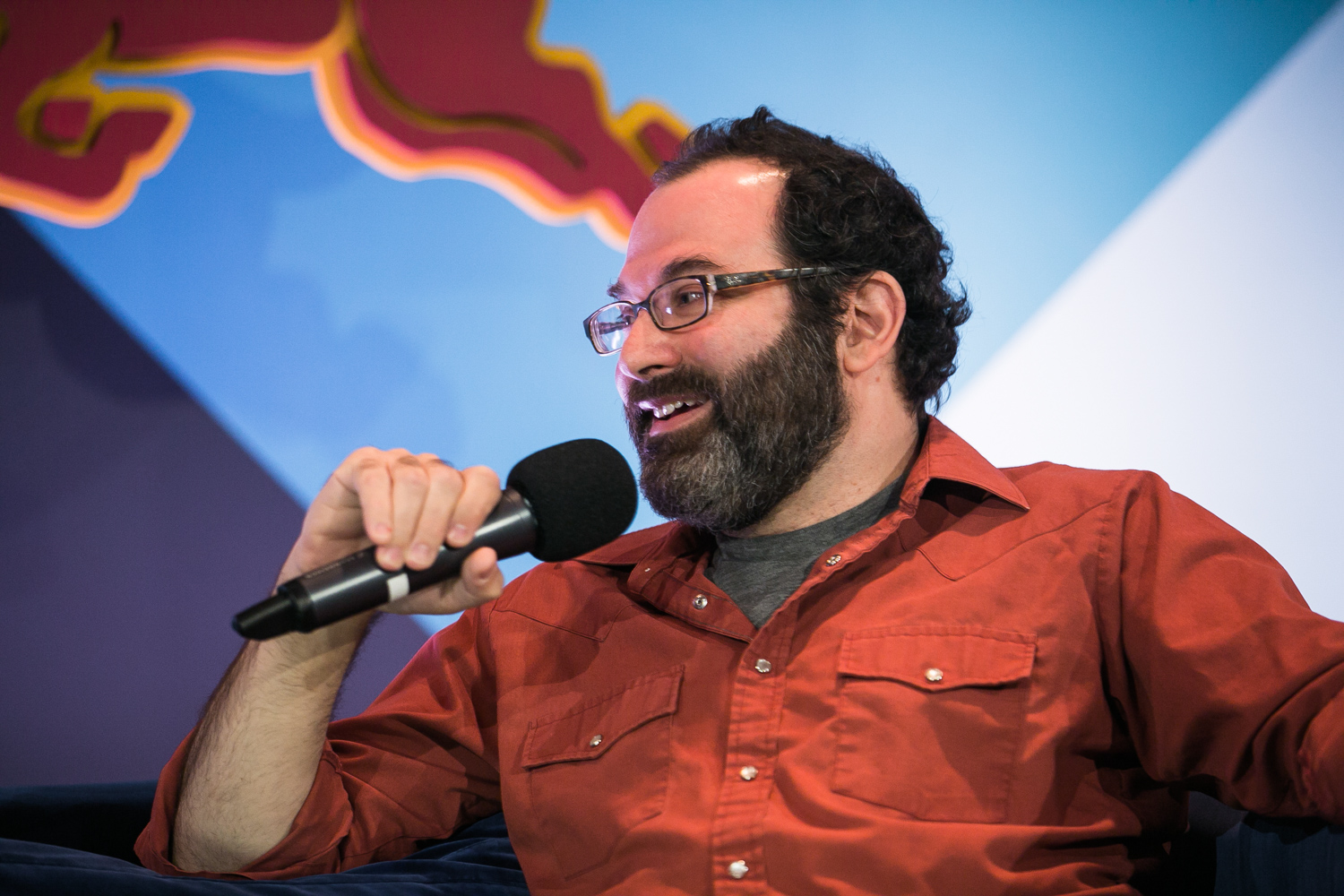The Tangled Jewish Roots of Mile-End’s Music Scene
Mark Slutsky explains why the Montréal neighborhood has long been home to extraordinary Jewish music
Picture this: Montréal is a regional epicenter of a thriving music scene. It’s largely based around the Plateau and Mile End neighborhoods, in venues on Fairmount, St-Laurent, Duluth and St-Urbain streets. Its practitioners have flocked to the city from around the world, attracted by the music community’s vitality and international reputation. The best of them, some surprisingly young, are considered stars in the musical firmament, though many still toil away in poverty. The community is supported by an appreciative local press and attracts impresarios, audiences and money.
We could be talking about Montréal now, or in 2011 or 2005 or 1999, the eras that gave birth to Grimes or Arcade Fire or Godspeed You! Black Emperor. But the description also neatly fits the Montréal of nearly a century ago, when the city’s then-booming Jewish community played host to a cantorial music scene of surprising endurance.
In the first half of the 20th century, areas now referred to as the Plateau and Mile-End were host to the city’s immigrant Jewish population, based around St-Laurent Street, also referred to as “the Main.” (The street has traditionally been said to represent the dividing line between English and French Montréal, though the truth was never that simple.) Think of the area as Montréal’s Lower East Side – a neighborhood which, like the Plateau and Mile-End, has changed dramatically over the decades, but which still bears visible traces of its working-class Jewish past.
The most obvious signs are there – celebrated businesses and tourist attractions like the St-Viateur and Fairmount bagel bakeries, Wilensky’s Light Lunch and Schwartz’s smoked meat delicatessen. More subtle are the signs of what were once crowded synagogues on what feels like every other block. Faded Hebrew characters can be seen on the masonry of buildings that have been converted into churches, colleges, day cares and apartment buildings. And amidst the detritus of a Jewish population that moved west decades ago – either to enclaves like Cote St-Luc, or further down the 401 to Toronto – a new generation of musicians have found a home.
By the 1950s and ’60s, the cantorial music craze started to die down. But Montréal kept it going far longer than practically anywhere else.
The Jewish influence on music in Montréal is less historical than it is geographic. You can’t draw a straight line between famed Cantor Joseph Rosenzweig and, say, Arcade Fire, but both wandered the same neighborhoods. The Ukrainian Federation on Hutchison was once a synagogue; now the POP Montréal festival stages shows there. La Sala Rossa, a storied venue co-owned by Godspeed You! Black Emperor’s Mauro Pezzente, was once the Jewish Workman’s Circle, and it looks much the same as it did when it was built in 1932. In a familiar evolution, what were once garment industry sweatshops have become rehearsal spaces and venues for semi-legal loft shows. And in between those two eras, Jewish Montreal’s most famous musical export, Leonard Cohen, stalked the same boulevards.
The city’s enduring tradition of cantorial music is especially notable. It’s a style that today is rarely heard outside of synagogues, where cantors (or hazzanim) lead prayer services, but in the mid-20th century, between the wars, it was both a form of worship and popular entertainment, and the Plateau and Mile-End were absolutely thriving with temples where you could hear it.
“Cantorial music in some ways was emulating opera and classical music,” says Zev Moses, director of the upstart Museum of Jewish Montréal, an invaluable resource for mapping the area’s history. “It owes itself to 19th century European traditions that weren’t Jewish at all, which they then integrate and formalize. It really comes out of the 1800s in Germany when Reform Jews appear and they’re trying to fit in with the rest of the culture of Europe.”
As for the Montréal scene, Moses says, “It started in the ’20s. By mid-century, all these synagogues had money, and each one could afford a cantor full-time, and often a choir as well. It became the thing that all the congregants wanted; it was almost like a status symbol.”
One of the most prominent venues for cantorial music was the B’nai Jacob synagogue on Fairmount, which in its heyday was considered the “Carnegie Hall” of Jewish music, playing host to famous cantors from around the world. The building is now a strange architectural portmanteau: When the congregation moved west in the 1960s, the College Français took over the building and inserted an awkward modernist façade over what was once a stately Romanesque temple. Only by looking up can you see the Hebrew characters still inscribed on the brick arches barely visible from the street.
By the 1950s and ’60s, the cantorial music craze started to die down all over North America, as Jews’ lives revolved less and less around the synagogue. But something about Montréal, with its economically stunted, time-capsule quality – a quality that over the last 20 years has made it a consistently inexpensive haven for musicians and artists – kept it going far longer than practically anywhere else.
“It stays alive in Montréal because it’s such a traditional community, basically until 10-15 years ago,” Moses says. “That world where you could only hang out with cantors, you could have a ton of colleagues in this city – that was possible until 2000, I would say.”
Although Jewish music didn’t necessarily mingle with the Québécois culture that surrounded it, there were some interesting cases of cultural entanglement. Not all Jewish musicians were cantors, and not all of them confined their playing to traditionally Jewish forms. One example is Bernard Wexler, a Romanian-Jewish immigrant who appeared in Montréal in the 1920s and took up the fiddle, eventually playing with Québécois musicians. “He ends up leading his own French-Canadian folk band in the 1930s, really at the height of a certain form of nationalism,” Moses says. “Because it’s the height of anti-Semitism in Quebec – not that I’m saying everyone was an anti-Semite, but it’s in that framework – he takes on the fake name Alex Bernard. He literally performs all over the province and into New Brunswick, and he’s super-popular, but he’s secretly Jewish.”
Another boundary-crossing figure was conductor Ethel Stark. Born in 1910 in Montréal to a family of Austrian Jewish immigrants, Stark grew up to become a skilled classic violinist and conductor. At the time, according to Maria Noriega Rachwal, author of From Kitchen to Carnegie Hall: Ethel Stark and the Montréal Women’s Symphony Orchestra, “She discovered that the conditions for women who wanted to play professionally were dismal. Orchestras didn’t want women in their ranks and the music industry frowned on female musicians in general.” In 1940 Stark met Madge Bowen, a philanthropist who encouraged her to form her own all-woman ensemble.

The Montréal Women’s Symphony Orchestra brought together musicians from all backgrounds and became the first Canadian orchestra to play Carnegie Hall (the real one in New York, not the one on Fairmount). They played many concerts at the Jewish Public Library, and the majority of the soloists were Jewish women. Although Stark’s name isn’t well-known today outside the classical music sphere, her influence was undeniable.
“Stark helped many women from across North America nurture their talent (a large percentage of the members of the MWSO were Jewish and many were American),” Rachwal says. “At the same time, she introduced to Montréal Jewish talent from all over the world – Yehudi Menuhin, Lea Luboshutz, etc… Her work helped to open up the doors of the music profession to many talented women. The women who trained with her went on to win positions in colleges, universities, orchestras and other music organizations across North America.” Stark died in 2012, at the age of 102. Earlier this year, a park in the Plateau, at the corner of Prince-Arthur and Clark streets, was named in her honor.
Leonard Cohen himself came out of the city’s strange stew of immigrant culture, music, poetry and nightlife. Born into an affluent family in Westmount in 1934, Cohen haunted the bars and restaurants of the Plateau, and fell in with a literary crowd based around McGill University. Cohen began writing poetry long before he made his name as a singer and the title of his 1964 collection Flowers for Hitler gives a pretty good impression of his somewhat tortured relationship with his upbringing. That same year he delivered an incendiary speech at the Montréal Jewish Library, reconstructed here by Cohen biographer Liel Leibovitz, that enraged the Jewish community.
Despite Cohen’s estrangement from the Jewish establishment (and his dabblings in Scientology and Christianity, as well as a decades-long commitment to Buddhism), there’s a discernible Jewish current to many of his songs. “Who By Fire” is based on a Yom Kippur prayer, “Dance Me to the End of Love” refers obliquely to the string quartets that played prisoners to their death in Nazi concentration camps and “The Partisan” is an adaptation of a French Resistance song. Of course, there’s also his most-covered song, “Hallelujah,” which begins, “Now I’ve heard there’s a secret chord / That David played, and it pleased the Lord.”
Click here to learn more about the recording of “You Want It Darker” by Leonard Cohen
More recently, Cohen has made an effort to connect with the cantorial music that so defined the city’s Jewish population when he was a boy. In an interview with Maclean’s about his new, and possibly final, album, You Want It Darker, Cohen talks about reaching out to Gideon Zelermyer, the cantor of Shaar Hashomayim, a synagogue in Westmount linked to the Cohen family for generations, and telling him “I’m looking for the sound of the synagogue cantor choir of my youth.” The synagogue’s choir can be heard on the album, the first time Cohen has incorporated cantorial music into his recordings.
The Jewish population’s exit from the Plateau only intensified in the 1970s, when the rise of the Parti Québécois and the separatist movement led to an exodus of English-speaking residents. Several decades of economic malaise followed, for Montréal in general as well for old Jewish immigrant neighborhoods in particular. (This wasn’t restricted to Montréal – the Lower East Side rotted away during the same years.)
There were remnants of Jewish culture, like the Bagg Street Klezmer Band (named after the Bagg Street Shul, a circa-1899 synagogue that is the only temple from that era still in operation), which was formed in 1992 and is still gigging to this day. Some businesses also clung to the neighborhood with surprising endurance. But for the most part, what happened to this charming old downtown neighborhood with low rents and lots of empty spaces is what happened everywhere else – the artists moved in. They formed bands, started their own record labels, opened venues. Many became fascinated with the fragments of Jewish culture they found in the then-decrepit streets of the Mile-End.
One of them was musician Josh Dolgin, AKA Socalled, who moved to Montréal in the ’90s to attend McGill from a small town in Quebec. “I was the only Jewish kid in this little town, so when I moved to Montréal, it wasn’t just the geography and the weird old Jewish businesses and stuff but just... Jews! There were tons of Jews around. That was slightly shocking and interesting, not to be this one weirdo who was the only one of that kind in the middle of nowhere.”
Obsessed with hip-hop, Dolgin made somewhat of a breakthrough when he started coming across Jewish vinyl on his crate digs. “I started finding these Yiddish records,” he says. “As a music lover and a guy who was into making shit, that was my doorway. These collections of records from the Jews who had lived in Montréal, and their collections of synagogue music, cantorial music, the Yiddish theater music, because there used to be a thriving Yiddish scene here, Hasidic music and klezmer, the dance music. On vinyl and 78s, I started to find these Rosetta stones of our culture that were still kicking around, and they were there for the taking because people were throwing out their records as all the old Jews were either moving to Toronto or dying.”
Sampling old Jewish records the same way American hip-hop producers sampled soul sides, Dolgin tapped into an emerging if short-lived Jewish cultural renaissance at the end of the ’90s into the early ’00s. “I’m the father of klezmer hip-hop,” he says, “Much to my chagrin.” Elsewhere in Montréal, acts like Black Ox Orkestar put their own spin on klezmer and folk traditions with a sound sympathetic to Constellation Records labelmates like Thee Silver Mt. Zion and Godspeed, with whom they shared members.
It was around that time that a classmate of Dolgin’s at McGill, Dan Seligman, started the POP Montréal festival as a counterpart to the popular Halifax Pop Explosion fest out east. Seligman invited Dolgin to play the festival’s second edition, opening for unlikely Hasidic dancehall star Matisyahu, and the two began a fruitful creative relationship.
The festival just held its 15th edition, and it’s still based very much in the Mile-End. It casts a net wider and weirder than most other circuit music festivals of its size, and it’s always had a low-key Jewishness to it. A featured artist one year was the New Yorker Irving Fields, a pianist who began his career in the 1930s and reached his zenith with 1959’s two-million-selling record Bagels & Bongos. Rediscovered by Dolgin, Fields played a packed POP concert in 2005 while in his late 80s, and he continued to gig up to his death at the age of 101 in August 2016. Other acts that have played the festival, like ’50s-era comedian Mort Sahl, epitomize a mid-century showbiz Jewishness that exists almost entirely in memory or in certain Los Angeles delicatessens.
This spirit extends to venues where POP’s shows are hosted. Recent editions have seen concerts at the Cinema L’Amour on the Main, which is now a porno theater but which once played home to Yiddish vaudeville. “Reclaiming the Cinema L’Amour and that kind of stuff is important to us,” Seligman says. “The fact that there’s this beautiful old theater that’s basically untouched, except for the copious amounts of sperm ingrained into its seats. But if you go into it it’s pretty much the way it was – there hasn’t been radical renovations on it. Bringing people into these spaces and doing something that points to the history of Montréal and what it was at one point in time – I think it’s important.”
Other promoters in the POP era seem to have that same sensibility, even if there isn’t anything specifically Jewish about the acts they book. Noah Bick is the founder of Passovah Productions, which has become a strong force for independent promotion in the city. His Passovah Festival has become an annual highlight on the music calendar, even if it isn’t meant to coincide with the Jewish holiday for which it’s named. That said, Bick does admit that “One of the first shows we did was one of the nights of the Passover seders, and then this year, without realizing it, I booked one of the festival events on the night of the second seder.”
“When I think about why I started putting on shows in 2008, it’s nothing to do with Jewishness,” Bick says. “And Passovah, as silly as it sounds, wasn’t meant as an intentionally Jewish project, but it’s definitely a pretty damn Jewish name.” And though, as Bick says, there isn’t a specific Jewish intent to Passovah, he, too, feels the significance of the area’s very particular culture and history. “I really do like the idea of working on rue de Gaspé like my dad did,” he says. “Going to a show in the Plateau where my grandfather grew up, that aspect of continuing to build on my cultural heritage, is pretty awesome.”

